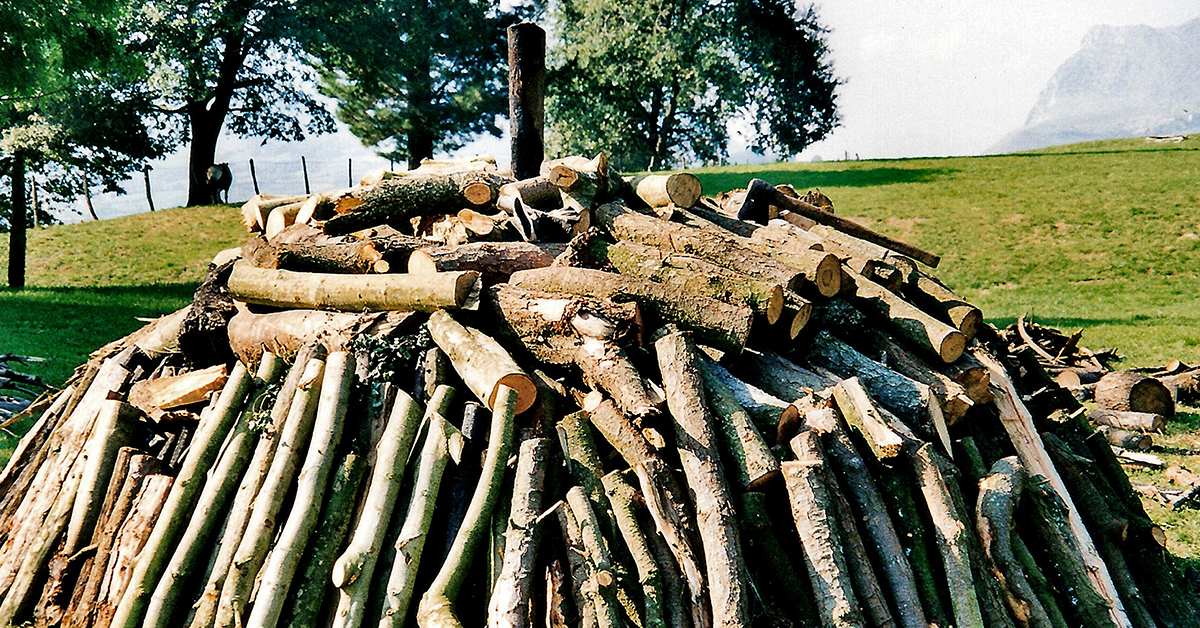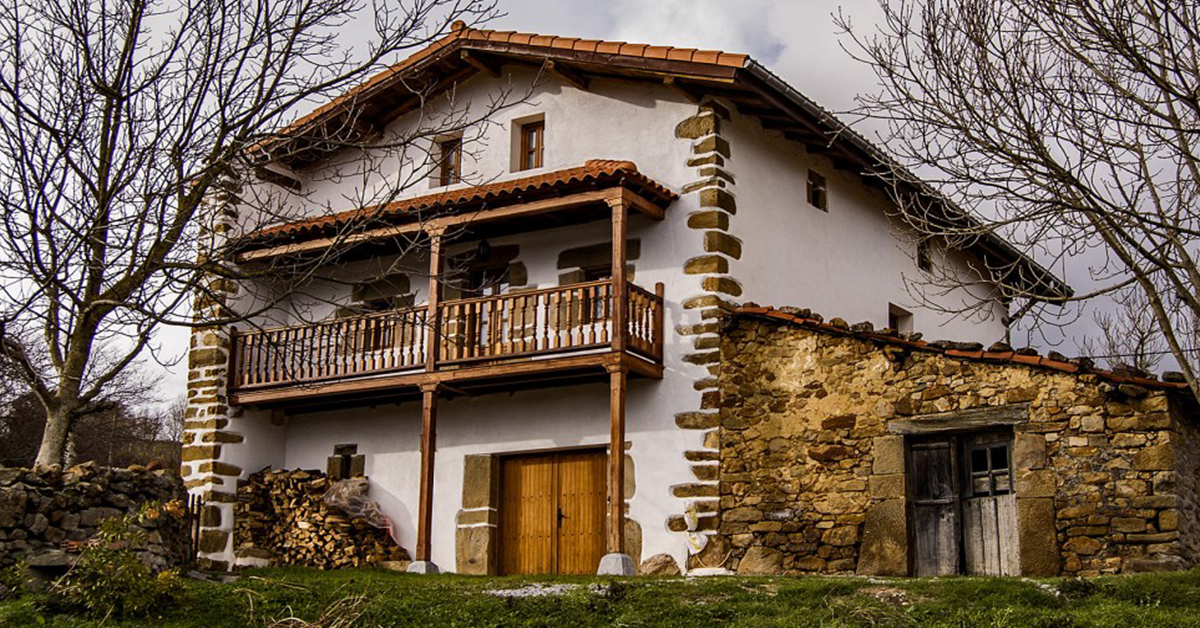Archives
Formerly, in the mountains surrounding the Valley of Carranza (Bizkaia), charcoal burning would be among the main uses of wood.
The burning season would usually start in March and last until November. The wood (chestnut, oak, beech or oak) to be charred would have been harvested in the winter and properly seasoned for several months. Two-men saws, axes, mallets and wedges were used for felling and preparing the timber. (more…)

Grazing cattle in Carranza (Bizkaia). Luis Manuel Peña. Archivo Fotográfico Labayru Fundazioa.
In the Valley of Carranza (Bizkaia) there is a long-established livestock farming culture, and a significant part of the population would once upon a time make their living from milk production, thus developing strong links with dairy cattle, and as a result acquiring certain ways of expressing themselves when referring to behaviour patterns and other human traits. (more…)
An auxiliary construction, usually attached to the house though sometimes detached from it, known as rocha used to be quite common, as senior locals in the Valley of Carranza (Bizkaia) recall.
The earliest record of that type of building appears in writing, in a letter sent by Diego de Ahedo, native of Carranza and Archbishop of Palermo, from Sicily to his nephew Pedro Ochoa de Ahedo, resident in the Valley. The letter is dated 15 January 1588, and in it mention is made of an annex where threshed grain was store: “it is now preferable and most convenient to store it in the outhouse where cider used to be made and kept”. (more…)





